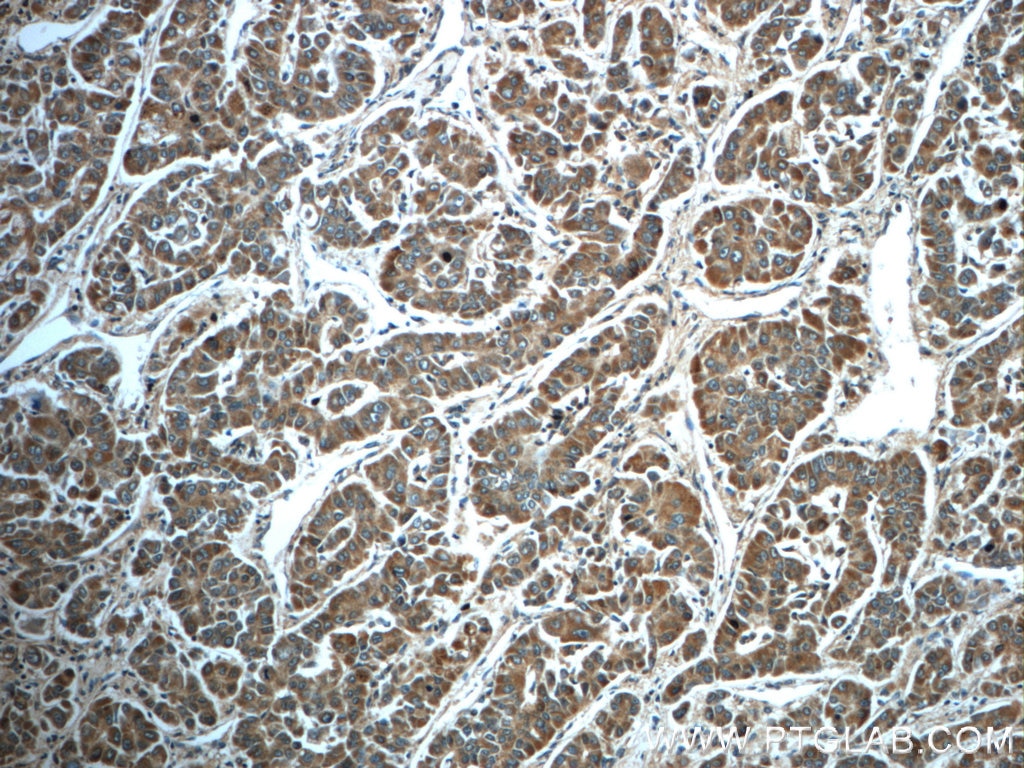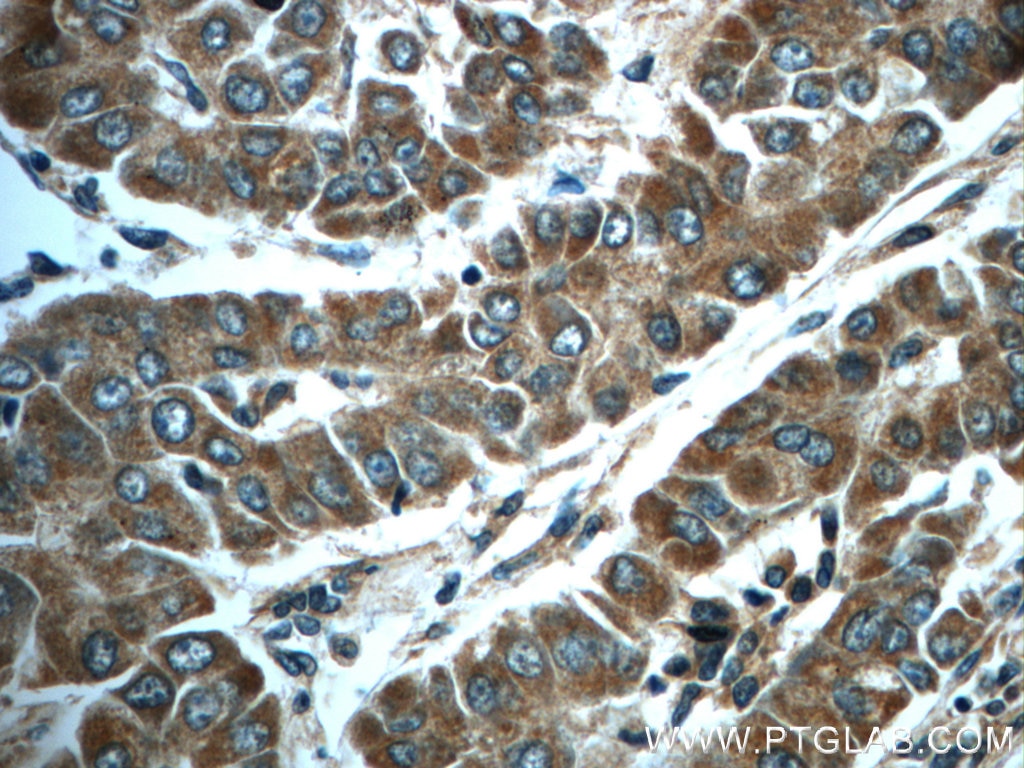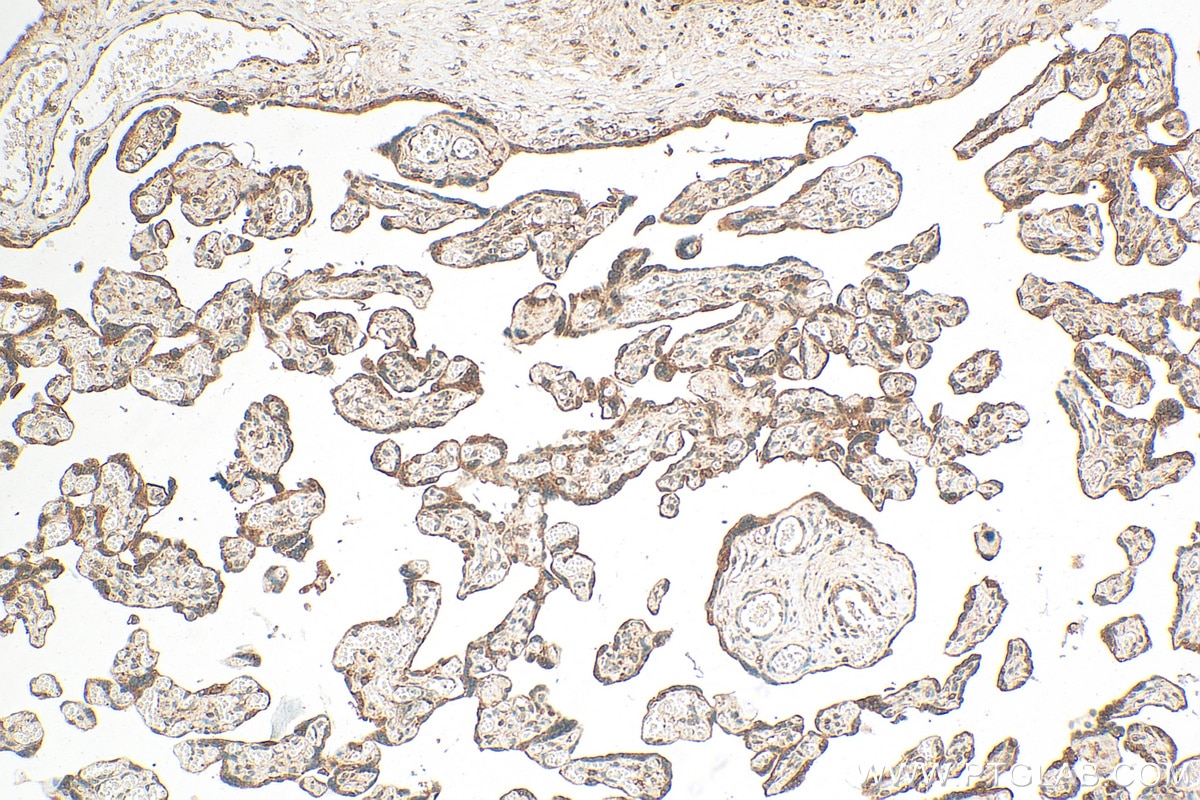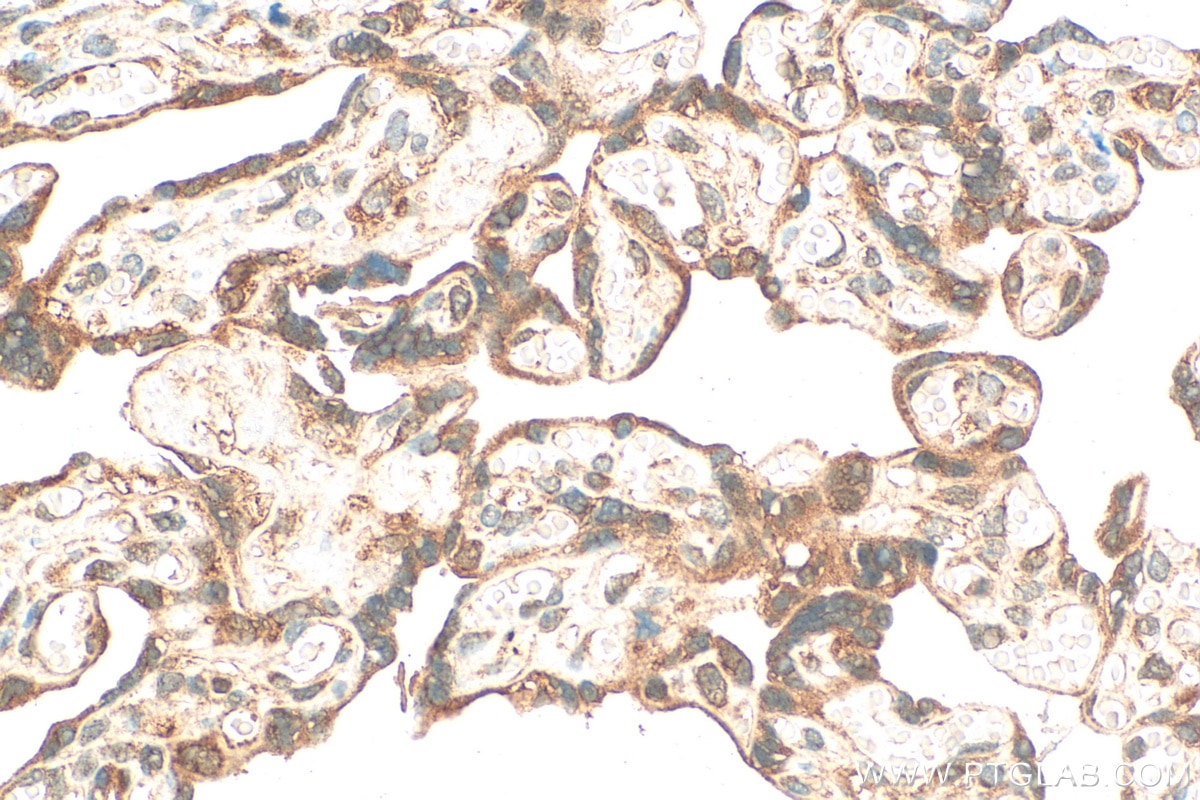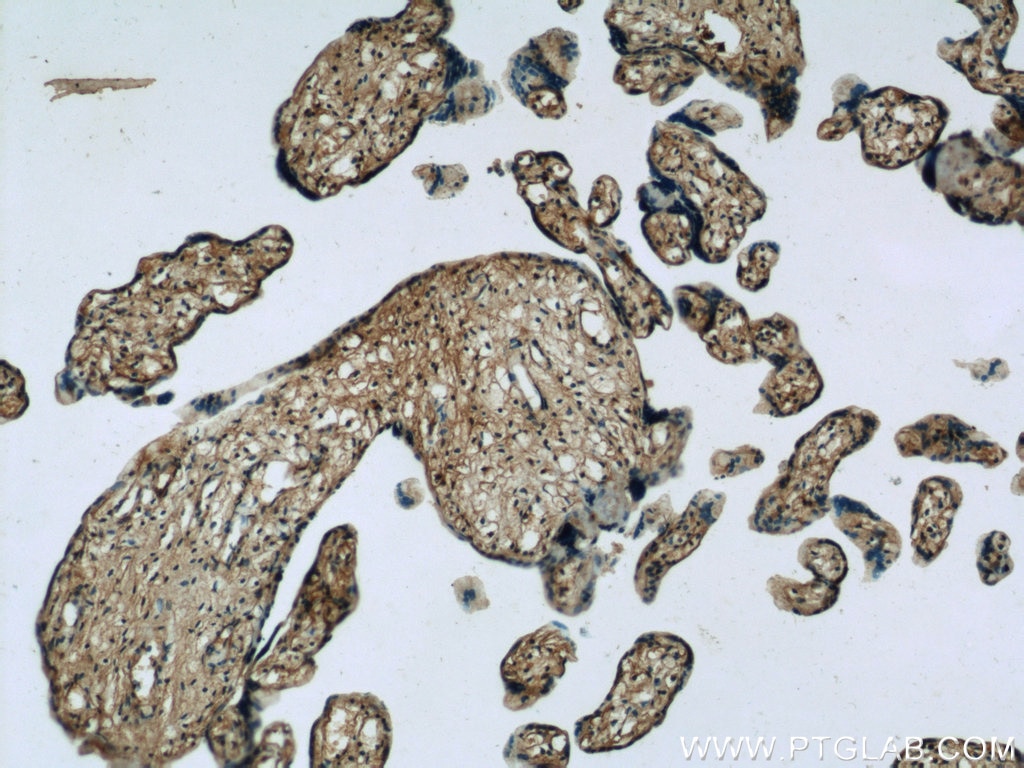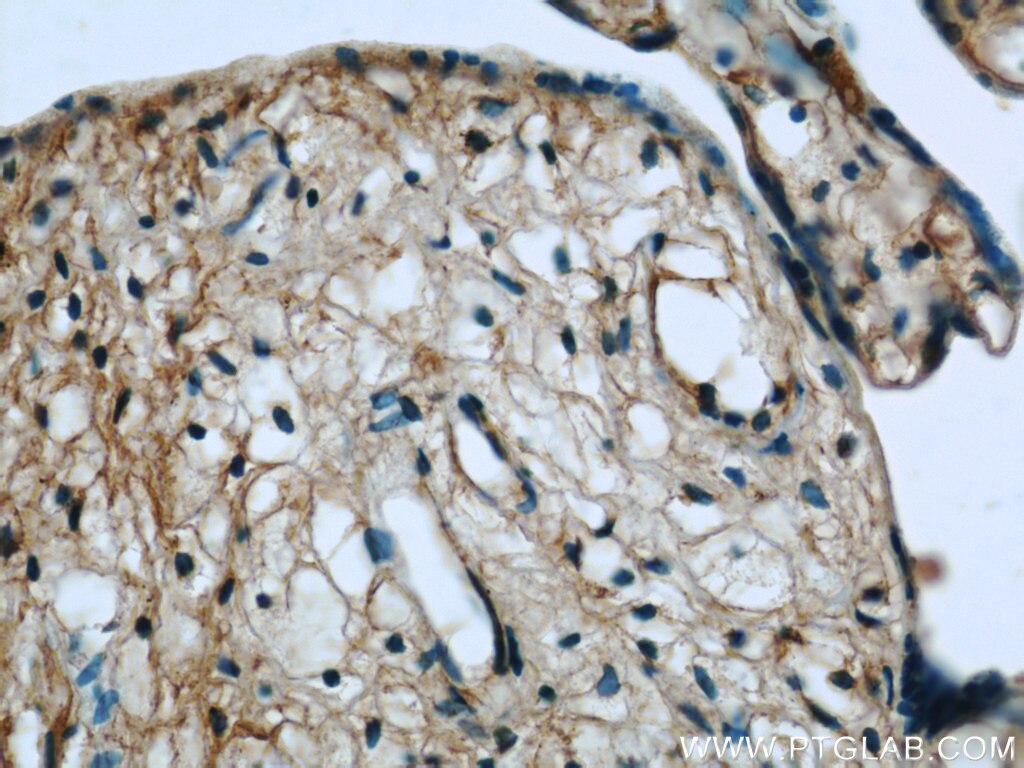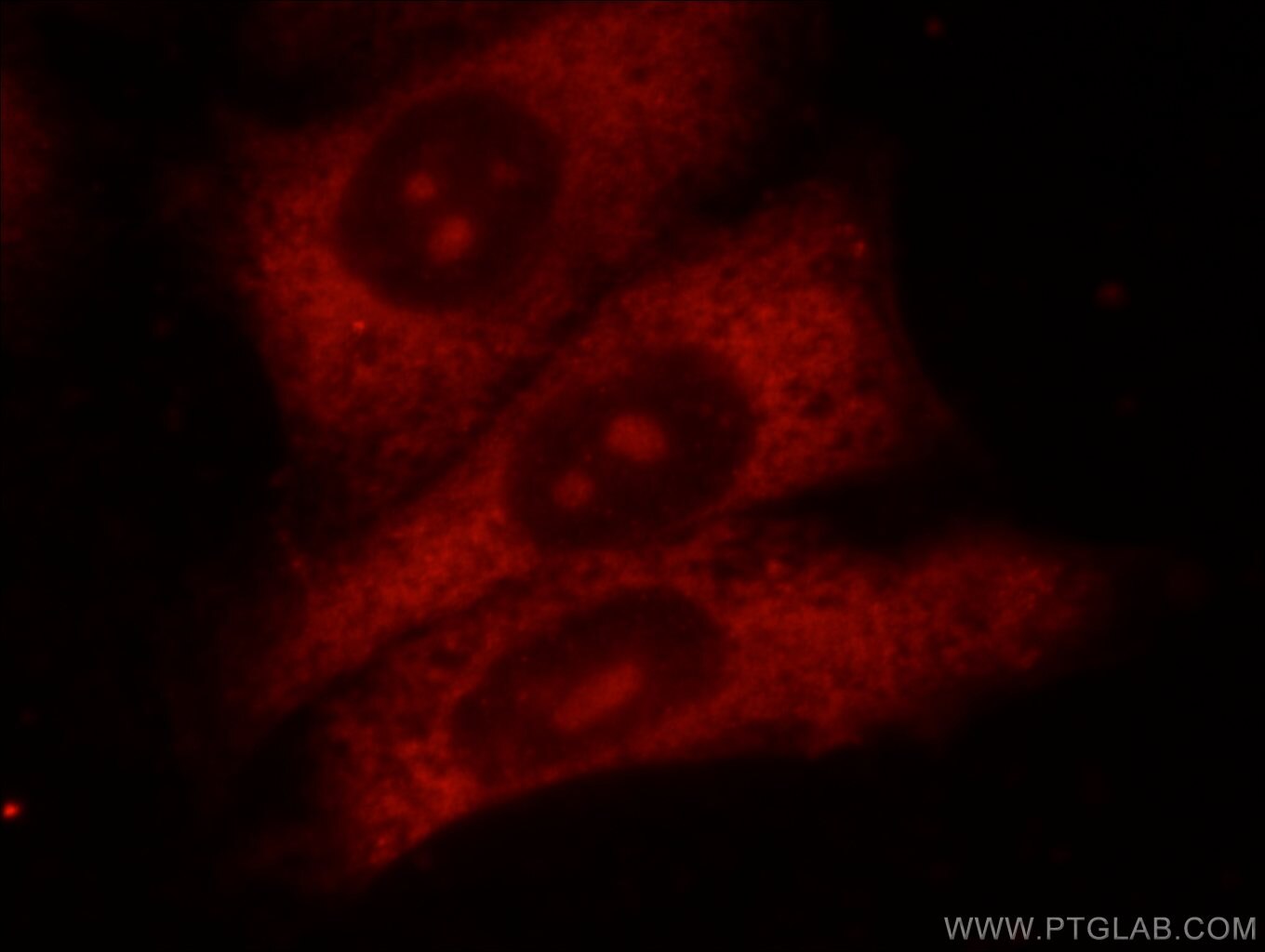Validation Data Gallery
Tested Applications
| Positive WB detected in | HeLa cells, HepG2 cells, Jurkat cells, mouse liver tissue |
| Positive IHC detected in | human liver cancer tissue, human placenta tissue Note: suggested antigen retrieval with TE buffer pH 9.0; (*) Alternatively, antigen retrieval may be performed with citrate buffer pH 6.0 |
| Positive IF/ICC detected in | HeLa cells, HepG2 cells |
Recommended dilution
| Application | Dilution |
|---|---|
| Western Blot (WB) | WB : 1:1000-1:8000 |
| Immunohistochemistry (IHC) | IHC : 1:20-1:200 |
| Immunofluorescence (IF)/ICC | IF/ICC : 1:10-1:100 |
| It is recommended that this reagent should be titrated in each testing system to obtain optimal results. | |
| Sample-dependent, Check data in validation data gallery. | |
Published Applications
| WB | See 9 publications below |
| IHC | See 5 publications below |
| IF | See 1 publications below |
Product Information
24529-1-AP targets HPSE in WB, IHC, IF/ICC, ELISA applications and shows reactivity with human, mouse samples.
| Tested Reactivity | human, mouse |
| Cited Reactivity | human, mouse, rat |
| Host / Isotype | Rabbit / IgG |
| Class | Polyclonal |
| Type | Antibody |
| Immunogen | HPSE fusion protein Ag21479 相同性解析による交差性が予測される生物種 |
| Full Name | heparanase |
| Calculated molecular weight | 543 aa, 61 kDa |
| Observed molecular weight | 60 kDa |
| GenBank accession number | BC051321 |
| Gene Symbol | HPSE |
| Gene ID (NCBI) | 10855 |
| RRID | AB_2879591 |
| Conjugate | Unconjugated |
| Form | Liquid |
| Purification Method | Antigen affinity purification |
| UNIPROT ID | Q9Y251 |
| Storage Buffer | PBS with 0.02% sodium azide and 50% glycerol , pH 7.3 |
| Storage Conditions | Store at -20°C. Stable for one year after shipment. Aliquoting is unnecessary for -20oC storage. |
Background Information
HPSE(Heparanase) is also named as HEP, HPA, HPA1, HPR1, HPSE1, HSE1 and belongs to the glycosyl hydrolase 79 family. It is a endoglycosidase that cleaves heparan sulfate proteoglycans (HSPGs) into heparan sulfate side chains and core proteoglycans. HPSE is essential in the disassembly of the extracellular matrix (ECM) by invading cells. It has 3 isoforms produced by alternative splicing with the molecular weight of 61 kDa, 55 kDa and 53 kDa. The full length protein has six glycosylation sites. The cleavage of the 65 kDa form leads to the generation of a linker peptide, and 8 kDa and 50 kDa products. The active form, the 8/50 kDa heterodimer, is resistant to degradation and glycosylation of the 50 kDa subunit appears to be essential for its solubility.
Protocols
| Product Specific Protocols | |
|---|---|
| WB protocol for HPSE antibody 24529-1-AP | Download protocol |
| IHC protocol for HPSE antibody 24529-1-AP | Download protocol |
| IF protocol for HPSE antibody 24529-1-AP | Download protocol |
| Standard Protocols | |
|---|---|
| Click here to view our Standard Protocols |
Publications
| Species | Application | Title |
|---|---|---|
J Control Release cRGD-targeted heparin nanoparticles for effective dual drug treatment of cisplatin-resistant ovarian cancer | ||
EMBO Rep CircHIPK3 sponges miR-558 to suppress heparanase expression in bladder cancer cells. | ||
Br J Cancer Shed Syndecan-1 is involved in chemotherapy resistance via the EGFR pathway in colorectal cancer. | ||
Neural Regen Res Reducing LncRNA-5657 expression inhibits the brain inflammatory reaction in septic rats. | ||
Diabetes Res Clin Pract Heparanase-driven inflammation from the AGEs-stimulated macrophages changes the functions of glomerular endothelial cells. | ||
Exp Ther Med MicroRNA-219a-2-3p modulates the proliferation of thyroid cancer cells via the HPSE/cyclin D1 pathway. |

